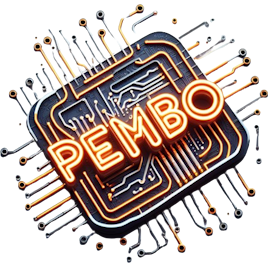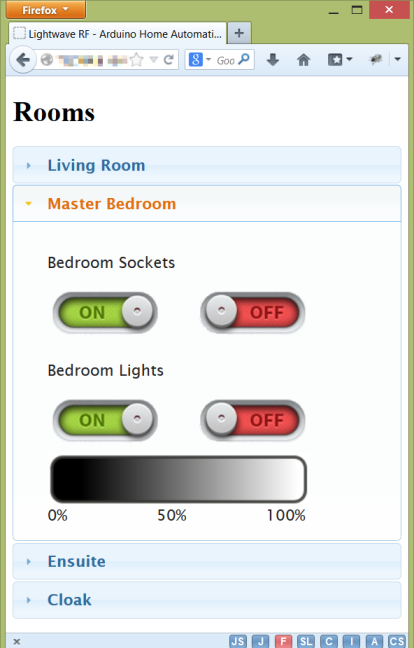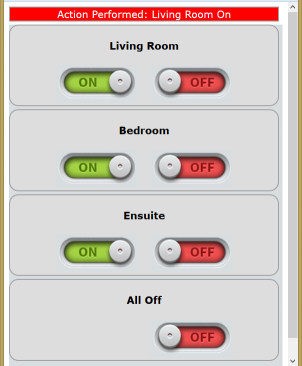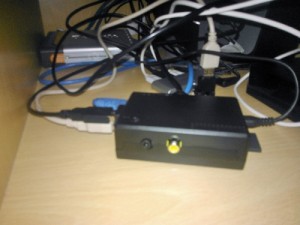Home Automation (Cont…)
To carry on with the Lightwave automation work, I’ve made a few other changes.
I’ve now rewritten all the arduino sketch again, this time to remove hard coded transmitter ids, and expect an id for every call, and also to allow for the control of dimmer switches so I can set the dimmer level of a light.
Following on from this, I’ve completely rewritten the PHP, using the php-serial library to bring a bit more stability to the serial comms, and also created a mysql database and a bunch of tables to hold the transmitters, devices, types, paired transmitters, etc. This allows me to dynamically build the page on the fly now using the database, looking something like:
As I know the types from the DB, I can offer a dimmer setting on those, and you can alter dim by touching/clicking on a region of the gradient fill bar below the on off switches.
The device is still on a breadboard and needs soldering together, but I want to create config pages next that
- Setup/create the database
- Allow for addition of a new transmitter
- Modification of settings, e.g. delay timer for command, serial port location, etc.
- Modification of rooms/etc
- Pairing of a transmitter with receiver
- Implement the ‘all off’ kill switch again, to power off everything in the database
- Confirm this all works even from a hard reset!



